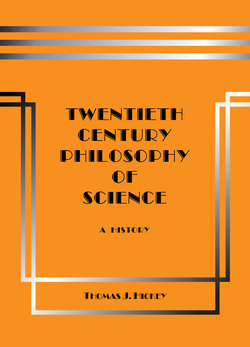Читать книгу Twentieth-Century Philosophy of Science: A History (Third Edition) - Thomas J. Hickey - Страница 60
На сайте Литреса книга снята с продажи.
3.29 Semantics of Mathematical Language
ОглавлениеThe semantics for a descriptive mathematical variable is determined by its context consisting of universally quantified statements believed to be true including mathematical expressions in both theory language proposed for testing and test-design language presumed for testing.
Both test designs and theories often involve mathematical expressions. Thus the semantics for the descriptive variables common to a test design and a theory may be supplied in part by mathematical expressions, such that the structure of their meaning complexes is partly mathematical. The semantics-determining statements in test designs for mathematically expressed theories may include mathematical equations, measurement language describing the subject measured, the measurement procedures, the metric units and any employed apparatus.
Some of these statements may resemble 1946 Nobel-laureate physicist Percy Bridgman’s “operational definitions”, because the statements describing the measurement procedures and apparatus contribute meaning to the descriptive term. But contrary to Bridgman, and as Carnap says in his Philosophical Foundations of Physics, each of several operational definitions for the same term does not constitute a separate definition for the term’s concept for the measured subject, thereby making the term equivocal. Likewise pragmatists say that descriptions of different measurement procedures contribute different parts to the univocal meaning of the descriptive term, unless the different procedures produce different measurement values, where the differences are greater than the estimated measurement error in the same range of measurement.
